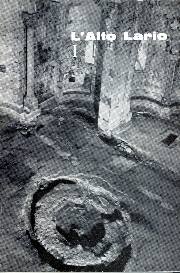
Sorico
History
The presence of man in Sorico can be traced in the Neolithic, as from numerous discoveries of tools in Pian di Spagna. Among Pre-Latin population there were Ligurians, Celts, Etrurians and the founders of Olonio: the Aneuniates.
The history of Olonium and Sorico are deeply interwoven during the centuries. Romanization of the territory took place at Augustus’ time: the record of a tower, two marble cippuses discovered in 1899, a necropolis, epigraphs, stones and walls discovered after several works are the testimony of a Roman village along the line which connected Como and the passes of Valtellina and Valchiavenna (Itinerarium Provinciarum).
During Roman rule, Saint Fedele’s martyrdom took place. Saint Fedele was a Roman Christian soldier who had his head cut off because he defended his faith; a little temple was built in 964 at the Northern border of the territory, and nowadays it can still be visited: that’s the San Fedelino, which
depends on the church of Novate Mezzola.
Christianization came after the fall of Western Roman Empire thanks to the work of a college f clergymen and the popularity of blessed Antonio, who had been living on Berlinghera mountain for 23 years as an hermit. In 590 Autari’s Arimans destroyed the Roman Olonium, which was later rebuilt by Longobards and lasted 800 years, till the floods of Adda and Mera obliged the inhabitants to take cover in other places.
Franks came after Longobards and, in 780, Saint Dionigi’s monastery took jurisdiction of the three parishes of Valtellina, according the permission of creating a market in 840. The toponym Sur-ego appeared for the first time in a document dated 851. The parish of Olonio extended from Gera Lario to the Lake Mezzola, including the Retic coast to Civo, except for Campovico and Morbegno,
and the Orobic coast from Regoledo to the little Lake Piona.
During the Middle Ages, Sorico was allied at first with Milan, then with Como during the imperial fights: in 1193, a pilgrim hospice (xenodochio) was built in Calchera for people who travelled along Regina road. In 1444, the parish of Olonio was moved to Sorico and Santo Stefano church was built and became one of the “Three Parishes” (Tre Pievi) with Dongo and Gravedona.
In 1452, Saint Miro’s (died in 1381) grave was found out and in that place Saint Michele’s church was enlarged and changed its name. In 1480, the community of Montemezzo parted from Sorico. In 1495, Leonardo Da Vinci visited the Upper Lake: the rocks in the background of some of his works could be the ones of the Val Codera seen from Berlinghera mountain.
In 1505, the community of Piantedo parted from Sorico and in 1512 the Grigioni occupied the Valtellina: Pian di Spagna had been the battlefield of numerous military operations of various nations till 1797, the first of which was the sack of Sorico made by Swiss soldiers(1515), followed by the fire set up by the French troops in the town.
After the short time of Medeghino’s dominion, Sorico was again under Sforza’s control, in 1582 Bugiallo parted from Sorico and became an independent church, in 1587 Gera did the same and in 1589 bishop Ninguarda described the leaving of the parish of Olonio in order to go in the one of Sorico; in his visit of 1593 he described the situation of the churches of Sorico (Santo Stefano, Santa Orsola, ruined San Bartolomeo, San Michele (nowadays San Miro), San Biagio in Dascio, Santi Rocco and Sebastiano in Albonico, San Giovanni Battista in Bugiallo).
In the meanwhile, the Cardinal Tolomeo Gallio was named “Earl of the Three Parishes” by Spain, who wanted the fortress of Fuentes to be built. Sorico was affected by Lansquenets plague in 1629 and was sacked by Duke of Rohan’s Frenchmen in 1635. Three Parishes, while Valtellina and Valchiavenna went on staying under Grigioni domination for 90 years.
Villa Giulini was destroyed by the river in 1750 and it wasn’t renovated anymore. In 1763, Sorico obtained a new border at Sasso di Dascio, more favourable with Grigioni.
During the nineteenth century, the building of practicable roads shifted most of the traffics of Regina road on the Lecco-Colico line and in 1841 the iron bridge of Ponte del Passo was built. The final control of the flow of Adda took place in 1858: Pian di Spagna took the same morphological aspect as today, as basis for the blessed Luigi Guanella for the foundation of Nuova Olonio, today in Dubino's territory, (1900).
Today Sorico is a dynamic, lovely tourist and residential centre.
selected readings

La Sepolta Olonio e la sua Pieve

Le tre Pievi

L'Alto Lario


